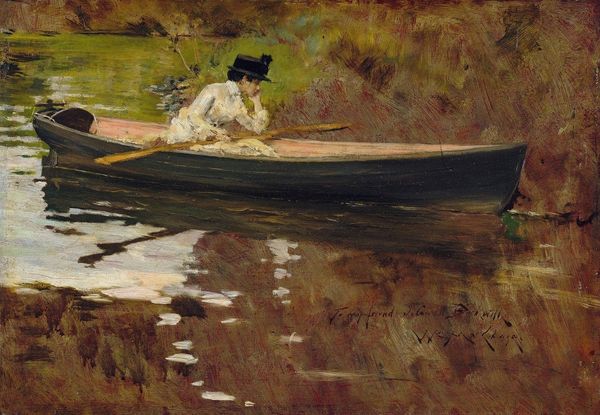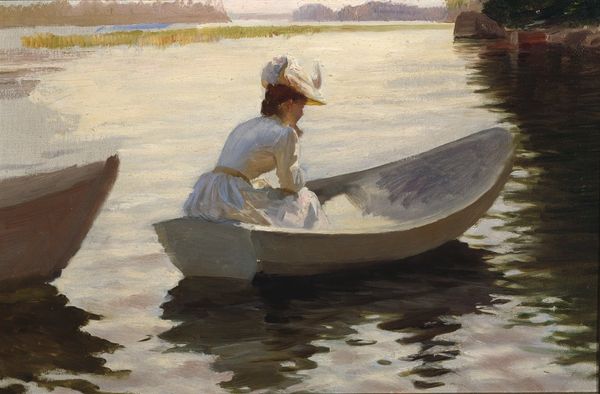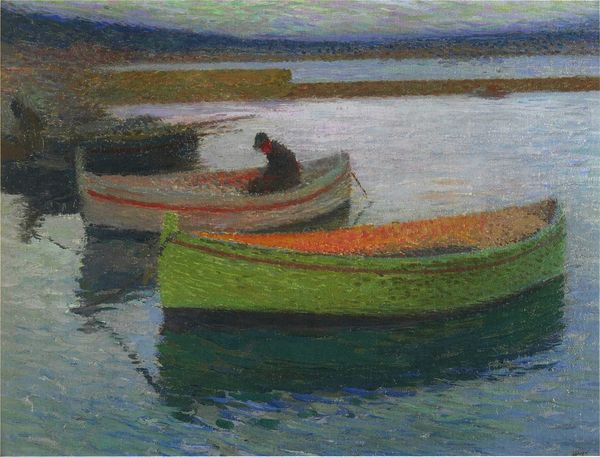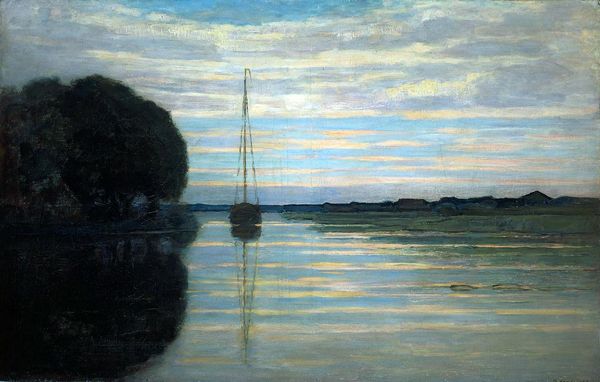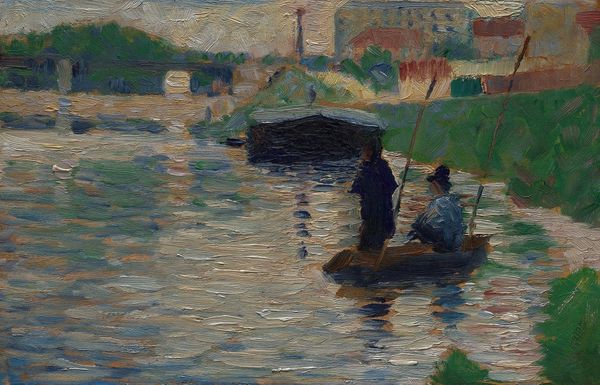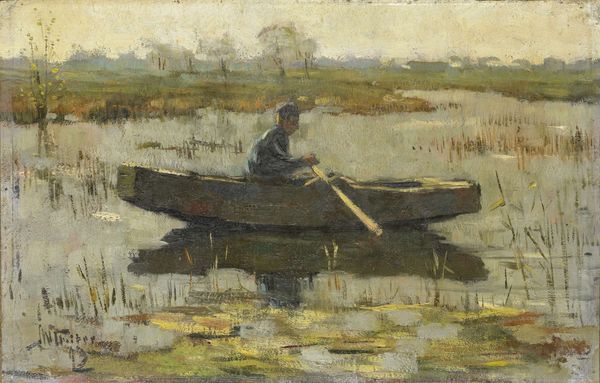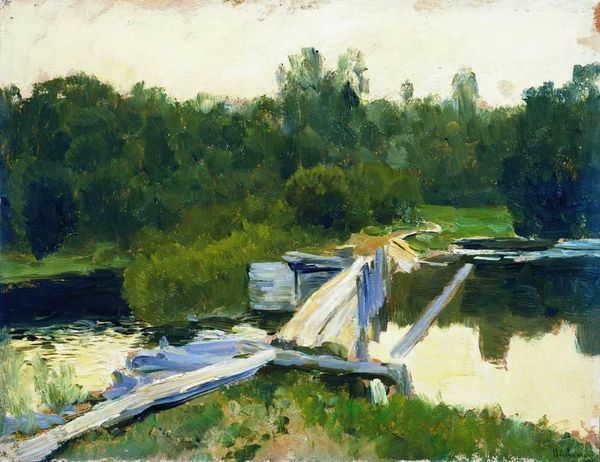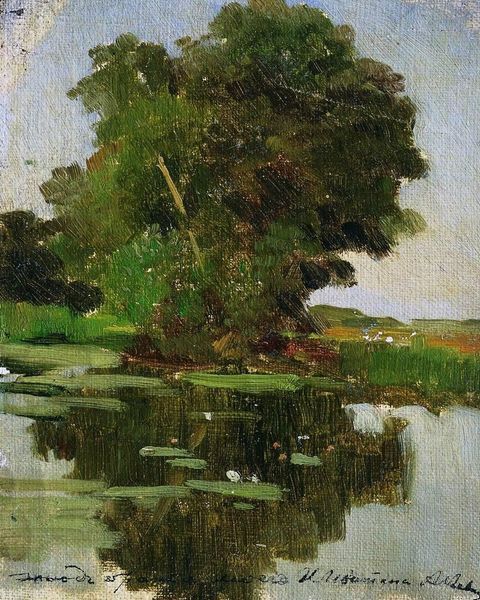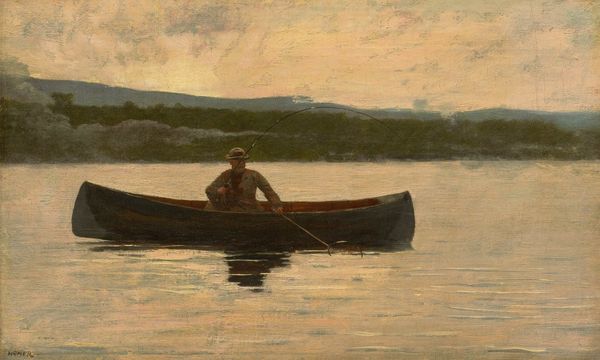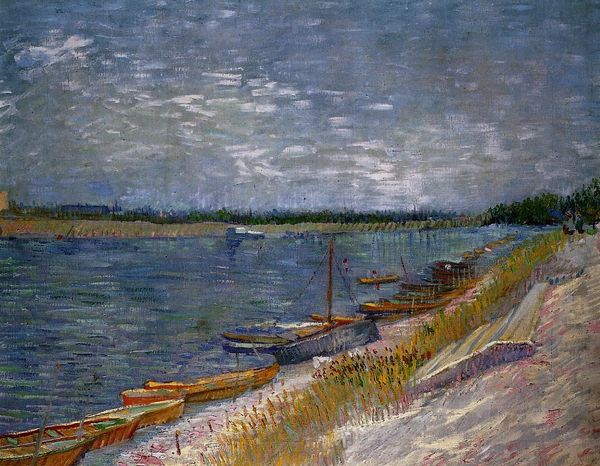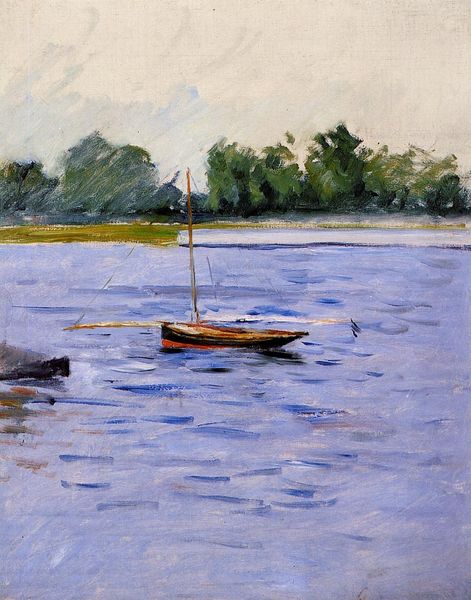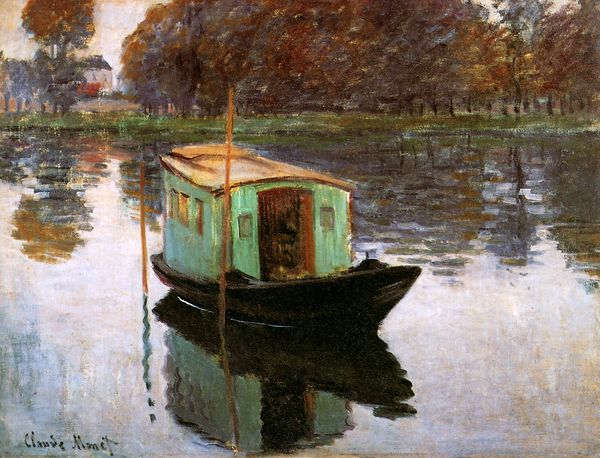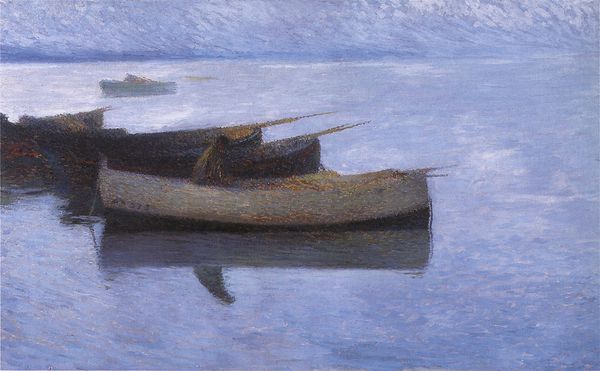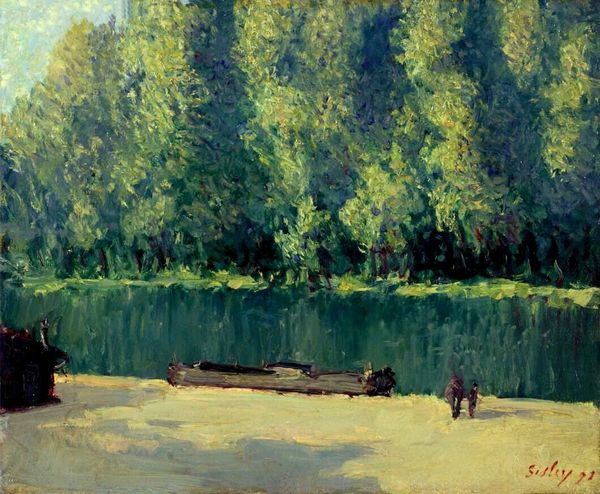
Copyright: Public Domain: Artvee
Curator: Winslow Homer’s “Sunset,” painted around 1875, offers a compelling view of the end of the day using oil on canvas. Editor: It's interesting. There is a quiet melancholy in this painting. A figure alone in a boat... It really speaks to a certain type of isolation. Curator: Absolutely. The solitary figure is a potent symbol, perhaps embodying a connection to nature that's simultaneously fulfilling and lonesome. Homer often explored this relationship. Notice how the color palette conveys tranquility and an introspection too. The fading light softens the edges and reduces the drama usually associated with a sunset, creating a meditative mood. Editor: I wonder about the social context. The 1870s were a time of Reconstruction in the US, rife with political and social tensions. Could this solitary figure, framed by a darkening landscape, represent the disillusioned individual, adrift in the aftermath of the Civil War? It would explain a lack of dramatic coloring you would typically associate with Romanticism of the time, where things were generally exaggerated. Curator: That’s a very insightful reading, locating it in the socio-political moment. From an iconographic viewpoint, one could even see parallels with Charon, the ferryman of the underworld, guiding souls into the unknown—especially with how the figure and boat's reflections melt into each other on the still surface of the water. It’s a potent image of transition, even hinting at the final transition of life. The symbol of the body on the cusp of death becomes quite literal as he turns his back toward the horizon, on his final row. Editor: And thinking about labor and leisure... a working man alone at dusk. The lack of detail allows him to represent something universal about post-war male identity in America—finding solace and perhaps struggle in a landscape marked by change and uncertainty. Curator: Very well said! His placement, half in shadow and half illuminated by the light of the sunset makes it even more poignant. It seems Homer presents something both concrete and universally emblematic about the place between day and night, life and death, memory and premonition. Editor: This has changed my view for sure. There is more at stake in the painting than simple loneliness. Curator: Indeed, Homer gives us a scene that lingers long after the sun has set.
Comments
No comments
Be the first to comment and join the conversation on the ultimate creative platform.
